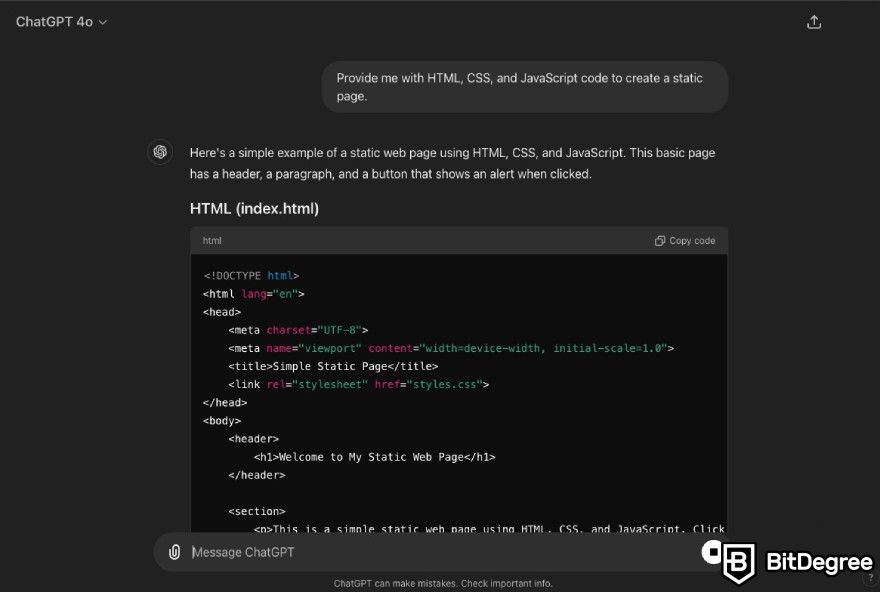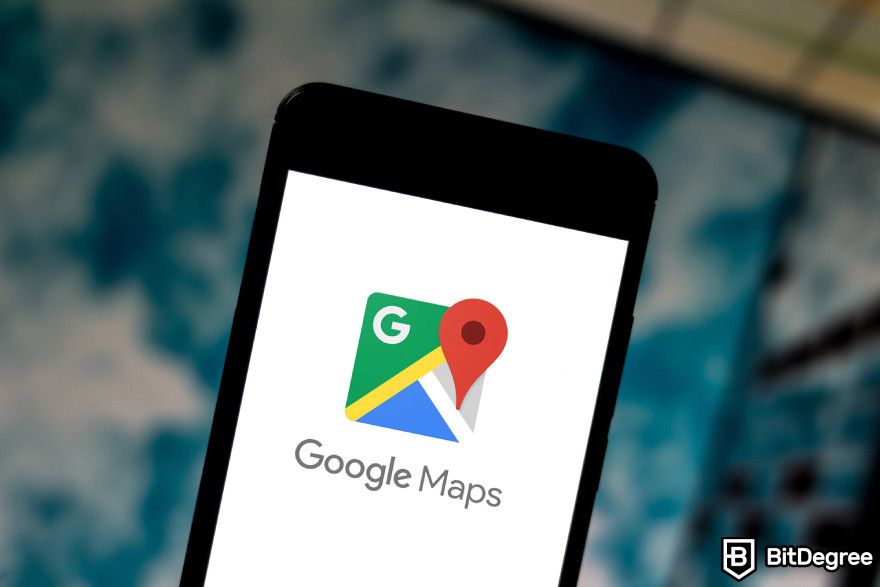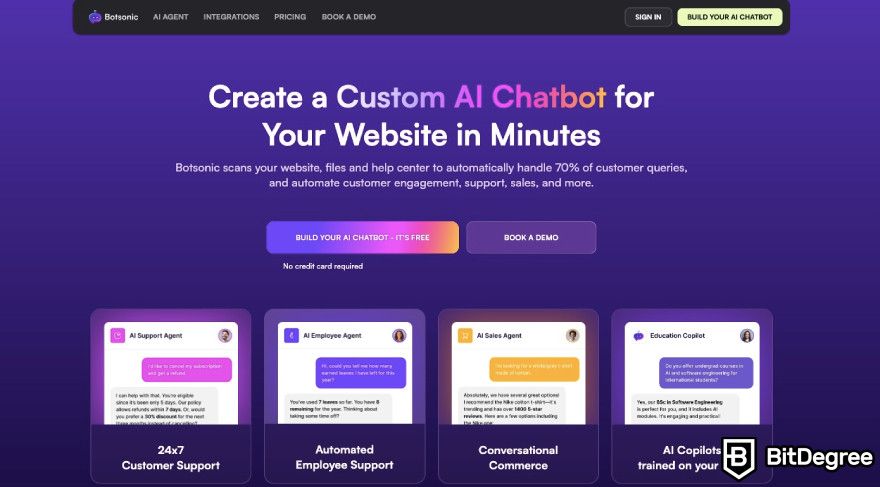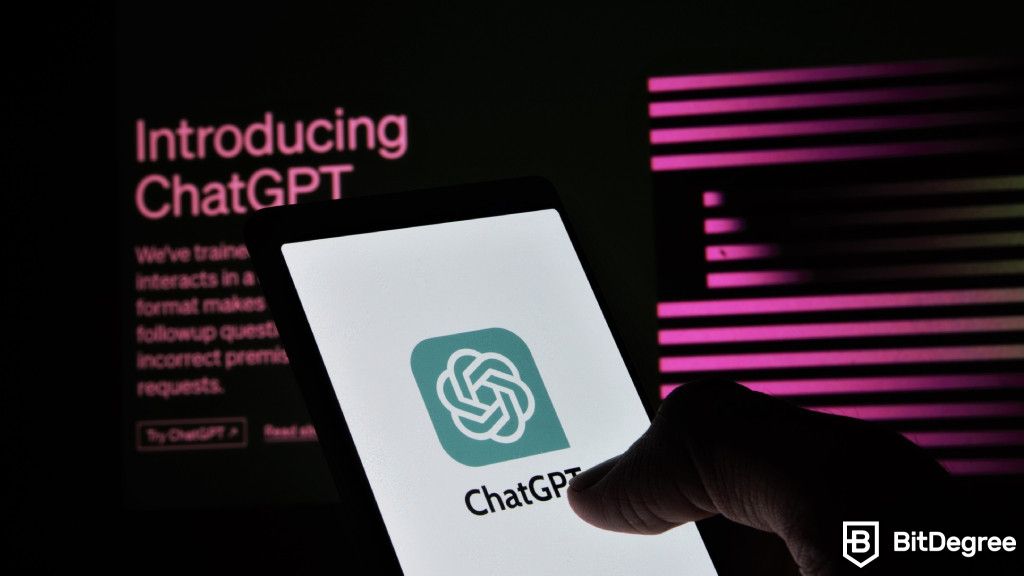Key Takeaways
- ChatGPT is capable of providing a code that users can then use to create a website. However, without any programming experience, the page will be low quality;
- When creating a website with ChatGPT, there are potential shortcomings. For instance, lack of advanced debugging capabilities, design limitations, and lack of SEO;
- For top-notch websites, it is recommended to either use an AI-powered application like Hostinger to do the job or hire a professional developer.
Stop overpaying - start transferring money with Ogvio. Join the waitlist & grab early Rewards NOW! 🎁
Surprisingly, it takes only half a second for a person to form an initial opinion of a website. This rapid judgment highlights the importance of creating a page that is both visually appealing and functional. With various AI platforms becoming more advanced, many are curious: Can ChatGPT create a website that would not only work but also meet the needs of catching a person's attention in the 50-millisecond span?
In the past, when someone wanted to build a page, they were pretty much limited to two options: learn the HTML, CSS, and JavaScript coding languages or hire a developer. The process was often complex and time-consuming. However, with the rise of drag-and-drop builders and CMS, short for content management systems, website creation has become more accessible to everyday users.
Additionally, to make the process even easier, using ChatGPT alongside platforms like Quillbot or Writesonic can streamline content generation and SEO tasks. If you want to explore these possibilities, the aforementioned AI-powered applications can be a practical way to support your website-building efforts.
Table of Contents
- 1. How Does ChatGPT Work?
- 2. Different Ways how to Create a Website Using ChatGPT
- 2.1. Build a Website Using WordPress and ChatGPT
- 2.2. Build a Website Using Only ChatGPT
- 2.3. Advanced Website Customizations Using ChatGPT
- 3. Limitations of Using ChatGPT for Website Creation
- 4. How to Create a Website the Easy Way?
- 5. SEO and User Experience Optimization Using AI Tools
- 6. Tips for Effective Prompts
- 7. Conclusions
How Does ChatGPT Work?
Before diving into the process of building a website, it’s important to understand how ChatGPT works.
Latest Writesonic Coupon Found:This application is a language model developed by OpenAI that processes natural language to generate responses. It can produce a wide range of outputs, from written content to coding snippets, which means that ChatGPT can create a website by generating the necessary code based on user input.
For our more tech-savvy readers, ChatGPT is optimized for dialogue using Reinforcement Learning with Human Feedback (RLHF), a method that employs human demonstrations and preference comparisons to guide the model toward desired behavior[1].
Additionally, ChatGPT is trained on vast amounts of human-written data from the internet, including conversations, which enables it to provide human-like responses. It can also browse the internet for real-time information. Nonetheless, it’s essential to fact-check everything, as AI-powered platforms are prone to "hallucinations", meaning they sometimes fabricate facts.
That said, like any tool, its effectiveness depends on how well you provide instructions. For instance, the more detailed and specific your prompt, the better the output will be. You can use various websites to create prompts or learn from a range of tutorials. In addition, you can also find a brief introduction on how to write high-quality prompts later in this article.

If any of you are wondering how ChatGPT is capable of outputting code, it’s actually quite simple. Since the application has been trained on vast amounts of text data, including many different programming languages, it generates the result by leveraging its large language model. When prompted to output code, ChatGPT analyzes the input prompt, identifies the necessary concepts and syntax, and then provides the results.
Moreover, OpenAI’s large language models are developed using three primary sources of information you can see below:
- Data that is publicly available on the internet;
- Information that OpenAI licenses from third parties;
- Data that the users or the human trainers provide.
ChatGPT generates the result by analyzing a large amount of existing data and learning how terms typically appear in context with one another. It then uses this knowledge to predict the most likely response to a user prompt, continuing to output each subsequent part of the text.
Different Ways how to Create a Website Using ChatGPT
There are multiple approaches on how to use Chat GPT to create a website, each with its own advantages and disadvantages. Below, we’ll break down two methods:
Build a Website Using WordPress and ChatGPT
First, let me explain WordPress to anyone unfamiliar with it. The application is a popular content management system that allows users to create websites without needing extensive coding knowledge.
WordPress operates on a database system that enables users to add, modify, and organize files, themes, plugins, and other types of content. In short, it provides everything you need to create a functional website that has the potential to attract significant user attention.
However, there are a few challenges with using WordPress. One issue is that the application has a bit of a learning curve, which new users must overcome. If you have no prior experience building websites or using similar platforms, it will take some time to figure out how to utilize all of WordPress’s tools.
Another drawback is that if you want your page to look especially polished and include custom features, you will need CSS code. This programming language lets users define styles such as colors, fonts, layouts, and animations.

This is where OpenAI’s chatbot comes in. ChatGPT can create a website by generating code in programming languages like CSS or HTML. For example, you can prompt the software to create a CSS snippet for a contact form or even a full webpage layout.
Naturally, if you don’t have any coding knowledge, debugging incorrectly generated code can be challenging, as ChatGPT is not perfect at producing it. Nonetheless, it's still a useful starting point, and with the right prompts, you can fix the errors. WordPress also offers hosting services, so there’s no need for additional platforms.
To begin, if you don’t have a ChatGPT account, make sure to create one. The same goes for WordPress. Once everything is set up, you can proceed by selecting a template in the website builder interface.
Next, you can prompt ChatGPT to generate your first blog post, or if you prefer an AI writer specifically designed for high-quality, SEO-optimized content, you can use Writesonic. Afterward, you can add the necessary widgets, extra pages, tags, and categories.

ChatGPT can even assist you in creating images for your blog posts. Having an AI-powered platform capable of generating whatever your imagination conceives can be a great asset to your page.
For the final steps in customizing your website’s appearance, you will need the assistance of ChatGPT. As mentioned earlier, the software is essential for generating CSS code. Remember, the more specific your prompts, the better the results will be.
Build a Website Using Only ChatGPT
So, can Chat GPT create a website without any assistance from builders? Yes, it can. However, if you have no programming knowledge, this can be a challenging task, and the overall result may not be the best. On the other hand, if you’re doing this as a fun project or with the goal of learning how to build a website yourself, it’s a great method to try.
If you’re wondering how to use ChatGPT to create a website, the first step is to ask the application to generate the necessary HTML, CSS, and JavaScript code to create a static page.

Before diving into the creation process, you’ll need a platform to run your code. I personally recommend Visual Studio Code for its aesthetic and user-friendly interface. Additionally, this programming platform supports almost every major language, so if you need additional syntax, it won’t be an issue.
For example, I asked ChatGPT to write code for a simple website that includes a minigame called “Guess the Number”. The idea is straightforward: the game is click-based, where players guess a number and receive one of three responses:
- Higher;
- Lower;
- Correct.
The fun part is that the minigame actually worked, and even though the website itself does not have a great design, it accomplished what it needed to do. This raises the question: can ChatGPT create a website that not only functions well but also has a polished design? The answer depends mainly on the instructions provided.
That said, when writing the prompt, it’s important to be specific. For instance, instead of writing, “Create a website”, it’s better to say, “Create a responsive HTML and CSS code for a portfolio site with a header, footer, and three sections”.
After entering the prompt and receiving the response, the next step is to copy and paste the generated HTML, CSS, and JavaScript code into your programming platform.
Once you have copied the code, open Visual Studio Code or a compiler of your choosing and create a new folder for your project. Inside this folder, create three new files: “index.html”, “style.css”, and “script.js”.

Next, paste the HTML code into the "index.html" file, the CSS code into the "style.css", and the JavaScript code into the "script.js". Save each project after pasting the content.
To view your website, you can open the "index.html" file directly in your browser by right-clicking and selecting "Open with Live Server" (if you have this extension installed) or by simply opening it in your browser.
As you make changes to the code, Visual Studio Code will automatically update the website in the browser, allowing you to test functionality and style in real time. This makes it easier to fine-tune the page according to your preferences.
Finally, keep in mind that unless you plan on using the website only for yourself and running it locally on your computer, you will need to purchase a hosting service, such as Hostinger, to allow access from other networks.

- Free to use
- Add-ons for Microsoft Word and Chrome
- Wide selection of tools
- Extensions for Chrome and Edge browsers
- Some tools are free
- Easy to use

- Supports over 120 voices in 20 languages
- Live customer support
- Voice cloning feature
- Voice cloning
- Emphasis and pauses
- Background music

- Easy to use
- AI-powered tools
- Cross-platform integration
- Multitrack editing
- AI-powered editing
- Accurate transcription
Advanced Website Customizations Using ChatGPT
After you’ve developed a basic website using ChatGPT, you can enhance its functionality with several advanced customizations. One powerful option is incorporating dynamic elements into your site.
ChatGPT can generate JavaScript for creating responsive forms, validating user inputs in real-time, and managing data interactions smoothly. This not only improves user engagement but also enhances the functionality of your site.
ChatGPT can create a website that includes features like responsive forms, validating user inputs in real-time, and managing data interactions smoothly. This not only improves user engagement but also enhances the functionality of your site.
You can also boost your website’s capabilities by integrating APIs, allowing your site to pull in real-time data from external sources. ChatGPT can assist by generating code that embeds features like Google Maps to display location services or adding live social media feeds.

Additionally, improving website accessibility is critical to making sure your content is available to a wider audience, including those with disabilities. ChatGPT can help generate the necessary HTML code, which is a standard markup language for documents designed to be displayed in a browser and ARIA, a set of roles and attributes that define ways to make content and web applications more accessible to people with disabilities[2].
Furthermore, customizing the design of your site is another area where ChatGPT can be helpful. It can suggest color palettes, font combinations, and layouts that suit your brand's identity. You can then implement these design ideas with CSS to create a polished, professional look.
The last important aspect is website performance. ChatGPT can assist in generating code that optimizes load times by minifying CSS and JavaScript files or implementing caching strategies.
Improving website speed not only enhances user experience but also contributes to higher search engine rankings since search engines prioritize fast-loading sites. On the other hand, doing this is also not strongly recommended since ChatGPT can make it even worse.
Limitations of Using ChatGPT for Website Creation
People who are looking into how ChatGPT can create a website might also be interested in the potential shortcomings of using an AI-powered tool to generate HTML, CSS, and JavaScript code.
I have already mentioned briefly that using this application to create a page might not yield the best results. Let me elaborate on the reasons.
The first thing worth mentioning is the limited debugging capabilities. If you have little to no programming experience, understanding the syntax that ChatGPT generates might be challenging. In case you encounter an error, it can be difficult to troubleshoot effectively, as ChatGPT may not always offer the best solution and could sometimes make the code more complicated.

Another issue is the design limitations. It’s unlikely that ChatGPT can create a website that fully conveys your imagination and needs. On the other hand, a developer would have a much higher chance of executing your vision entirely.
Furthermore, ChatGPT is not very competent when it comes to advanced SEO strategies, including backlink building, competitor analysis, and technical optimization. So, if you want your website to rank high in search engine result pages, using this platform alone will not be enough.
Moreover, all AI-powered applications that generate text are known for having hallucinations, which may result in ChatGPT providing you with undefined functions or unnecessary code segments aimed at solving parts of the problem, even when they shouldn’t exist.
How to Create a Website the Easy Way?
While ChatGPT is a useful tool for writing texts, generating images, and researching, it might not be the best option for creating websites unless you’re doing it for learning or fun. However, if you’re wondering whether ChatGPT can create a website, it’s important to note that while it can assist in generating code snippets or content, it doesn’t handle the entire web-building process like dedicated platforms.
That said, if you do want to create a high-quality page but don’t have any coding experience, there are plenty of website builders on the market. A few examples are Hostinger, 10Web, and Jimdo. These applications are designed to create top-notch websites and provide hosting at the same time, streamlining the whole creation process.
The great part about using an AI-powered website builder is that it comes with loads of templates, drag-and-drop functionality, and customer support, among other features. These platforms make things easier than trying to figure out how ChatGPT can create a website, especially for non-tech-savvy users.
Applications like Hostinger even offer eCommerce as an option where you can sell up to 500 products, manage orders and stocks, set up shipping, and even enable appointment booking. You would also receive 100% of the profit that you make from the website because the platform doesn’t charge any transaction fees. Hostinger even offers 20+ payment methods.

Another key benefit of using a website builder is that it will take much less time than using ChatGPT. In addition, many of these applications include SEO tools, analytics, and social media integration.
Moreover, using a website builder is also a breeze since all of them work pretty much the same. First, you answer a few questions about your page and then let the artificial intelligence do its work.
The generated site will usually have a high-quality design that fits your theme. If there are any changes needed, most applications will have a drag-and-drop editor that you can use to modify the page to your liking.
However, a website builder is recommended for smaller businesses as the pages tend to be slower due to unnecessary code, and even though the customization options are pretty wide, they are still limited.
Nonetheless, if your needs are not too big, and you would like to save money from spending on a developer, and you are not too enthusiastic about learning how to code yourself, these platforms can be a lifesaver.
SEO and User Experience Optimization Using AI Tools
Now, if you want to drive organic traffic, rank high in the SERPs, and improve the overall quality of your page, it doesn’t matter whether you choose to create your website with ChatGPT, WordPress, or a website builder.
For these tasks, it's recommended to leverage other AI-powered tools. One example is Writesonic, which can help you analyze and optimize your pages for higher rankings by checking your SEO. The application assists you in staying on top of trends with real-time Google data integration, providing the latest keywords, search volumes, and competitor metrics.
Additionally, if you want to enhance the user experience of your page, Writesonic offers a feature called Botsonic. This tool is an AI-powered chatbot for websites.

The way that Botsonic works is pretty simple: it scans your page, files, and help center to automatically handle around 70% of customer queries, automating customer engagement, support, and sales, among other functions. Botsonic even supports over 50 languages, making your website accessible to a broader audience.
Another tool worth mentioning is Descript. This application can help you create studio-quality tutorials or promotional clips to upload to your website. It removes filler words from your footage and can also eliminate noise and enhance voices, meaning you won’t need expensive microphones or a soundproofed room.
That said, the process of how ChatGPT can create a website extends beyond just text generation. For example, you can use the application’s DALL-E 3 art generator to create custom images for your site, ensuring it stands out visually without the need for advanced design skills. It’s worth mentioning that the DALL-E 3 is one of the best AI art generators available.
Moreover, ChatGPT isn’t just capable of helping you build a website. It can also assist in other fields, providing a range of plugins created either by OpenAI or by users. Examples include tools for marketing research, competitive analysis, and a tool designed to humanize AI-generated text.
Tips for Effective Prompts
Writing accurate and effective prompts is an essential part of learning how to use ChatGPT to create a website. To help you craft better instructions, I’ll provide a few tips that will help you receive more precise outputs.
The first key aspect of writing a high-quality prompt is the RTF format, short for Role, Task, Format. Simply put, it’s a framework that defines three crucial elements for creating a strong prompt: the role, the task, and the format. The role helps guide ChatGPT’s responses and ensures they align with the desired expertise or perspective.
For example, by writing, “You are an expert web developer with over 10 years of experience”, you’ll receive a better response than if you simply wrote, “Provide me with a CSS code”. This is because when ChatGPT adopts a role, it doesn’t just change its title. It adjusts its entire approach and narrows down the information it references.
When asking ChatGPT to generate code for your website, the task element becomes critical. You need to specify the task and outline the programming languages and frameworks it should use. In this context, it’s essential to define the specific objectives or actions the software should perform in response to your request.

An example of such a prompt might be: “Use HTML, CSS, and JavaScript, utilizing React and Bootstrap frameworks to create a website for my barbershop”. While this task description is concise, you can make it more detailed if necessary. On the other hand, if the task is complex, as is likely in your case, it’s advisable to break it into sub-tasks. The more specific the role and task are, the better ChatGPT can create a website that meets your expectations.
Lastly, the format component instructs the application on how you’d like the response to be presented. You can request the output as a list, table, or programming code - especially since our goal here is to understand how ChatGPT can create a website.
That said, here is an example of what a decent prompt should look like: “You are an expert web developer with over 10 years of experience. Your task is to create the homepage of a website for a fitness studio using HTML, CSS, and JavaScript, and the Bootstrap framework. The homepage should include a responsive navigation bar, a hero section with an image and call-to-action button, and a testimonials section. Provide the code in a neatly organized format, with detailed comments explaining each section for better understanding”.

Did you know?
Have you ever wondered which online learning platforms are the best for your career?
Conclusions
So, as you can see, ChatGPT can create a website. The AI is capable of generating HTML, CSS, and JavaScript code, and it can assist with content creation and styling. However, for a fully functional, high-quality page that would catch the attention of other people, you may want to consider a professional service or a website builder, especially if you’re serious about your project.
Additionally, for your page, you can utilize platforms like Writesonic, which offers many features, including content writing, SEO optimization, and even chatbot creation. Descript, which is capable of studio-quality video generation, can also complement your website quite a bit.
That said, when used for coding, ChatGPT is better to be chosen as a helper but not something that creates everything by itself. In pretty much any use case, artificial intelligence is created to assist us with our tasks and teach us topics that we may be too lazy to research ourselves.
The content published on this website is not aimed to give any kind of financial, investment, trading, or any other form of advice. BitDegree.org does not endorse or suggest you to buy or use any kind of AI tool. Before making financial investment decisions, do consult your financial advisor.
Scientific References
1. J. Lin., Z. Ma., R. Gomez., et al.: 'A Review on Interactive Reinforcement Learning From Human Social Feedbackl';
2. S. Green., E. Pearson., V. Gkatzidou., et al.: 'A Community-Centred Design Approach for Accessible Rich Internet Applications (ARIA)'.

.jpg?tr=w-400)





